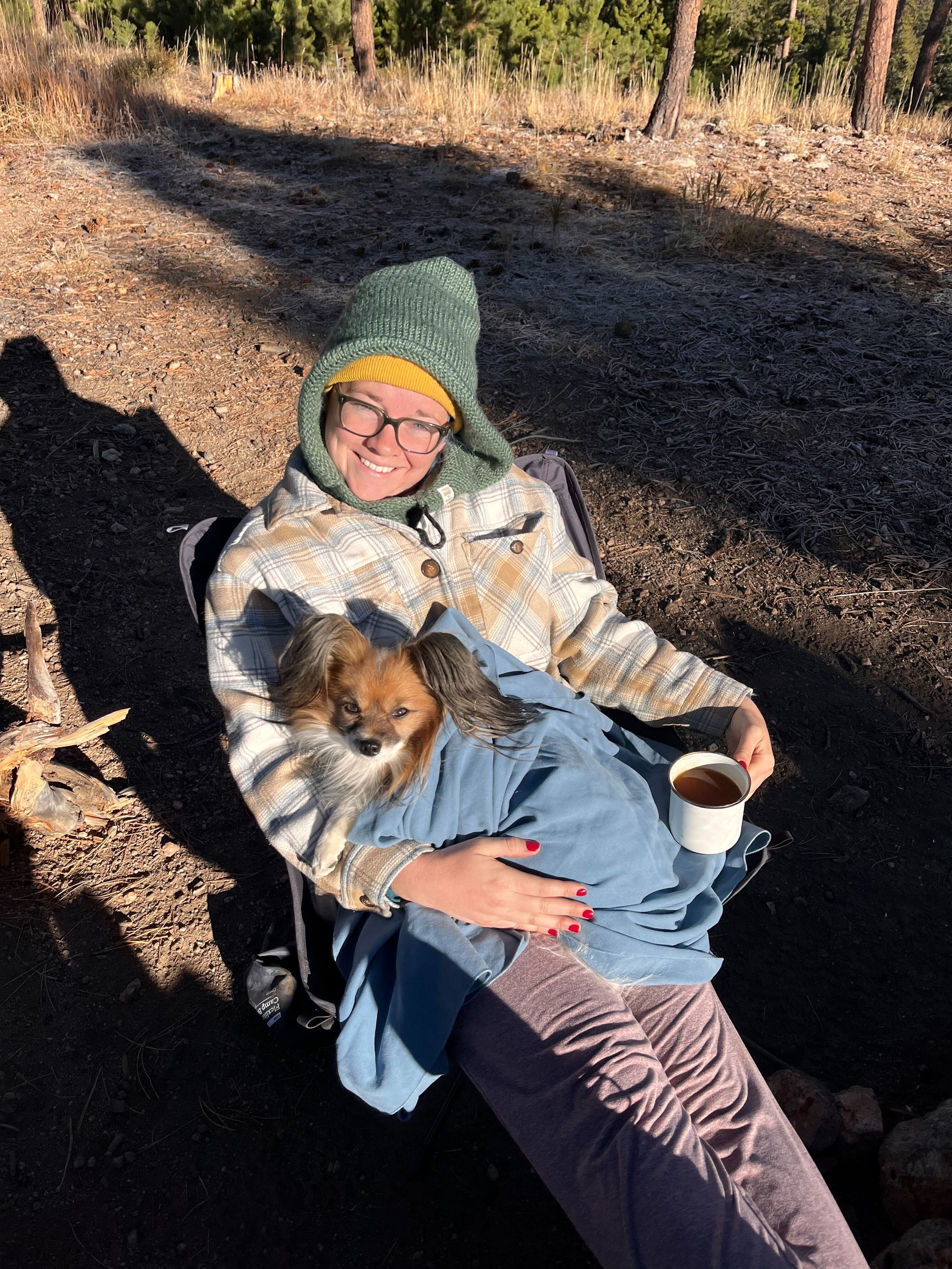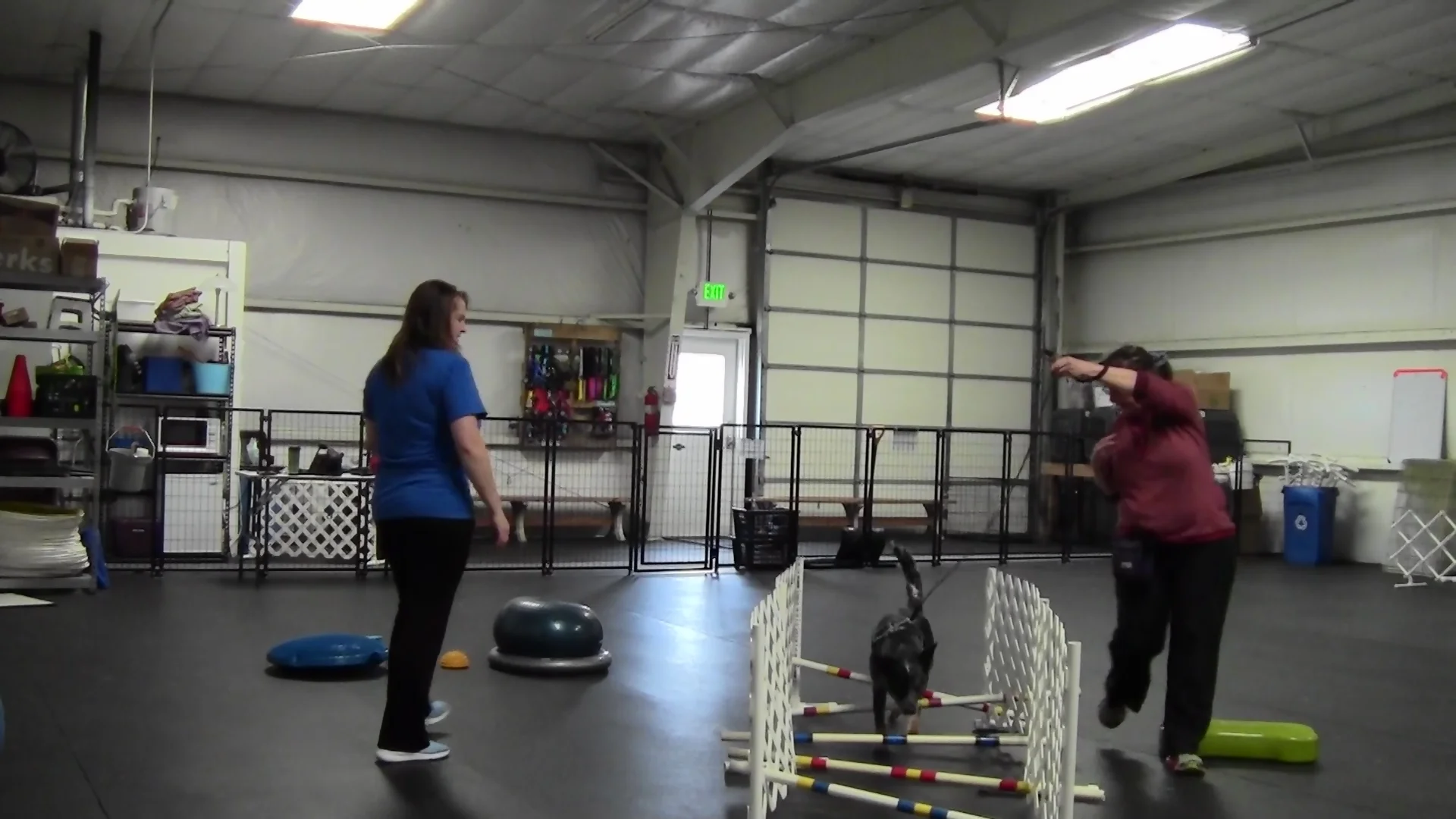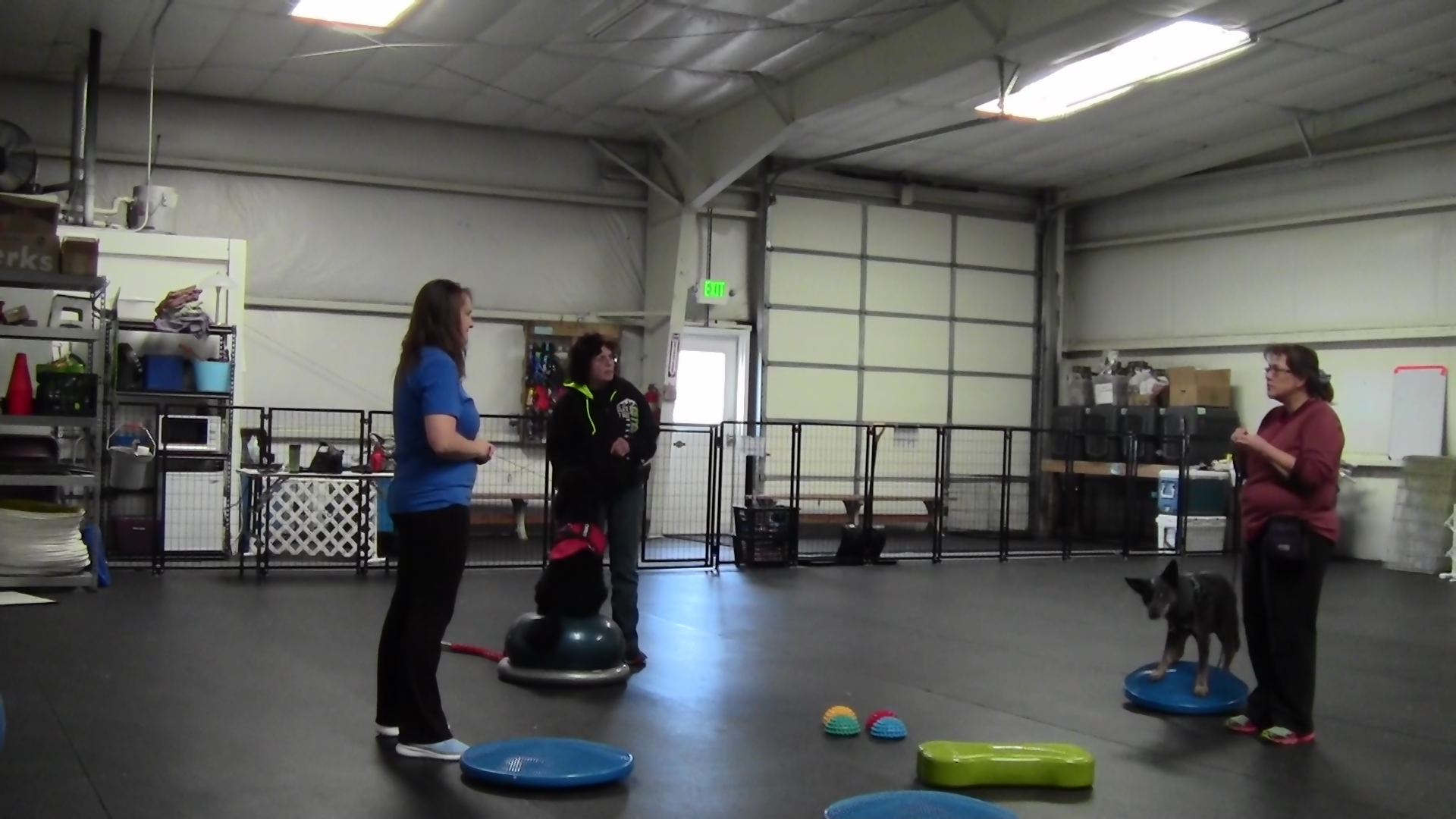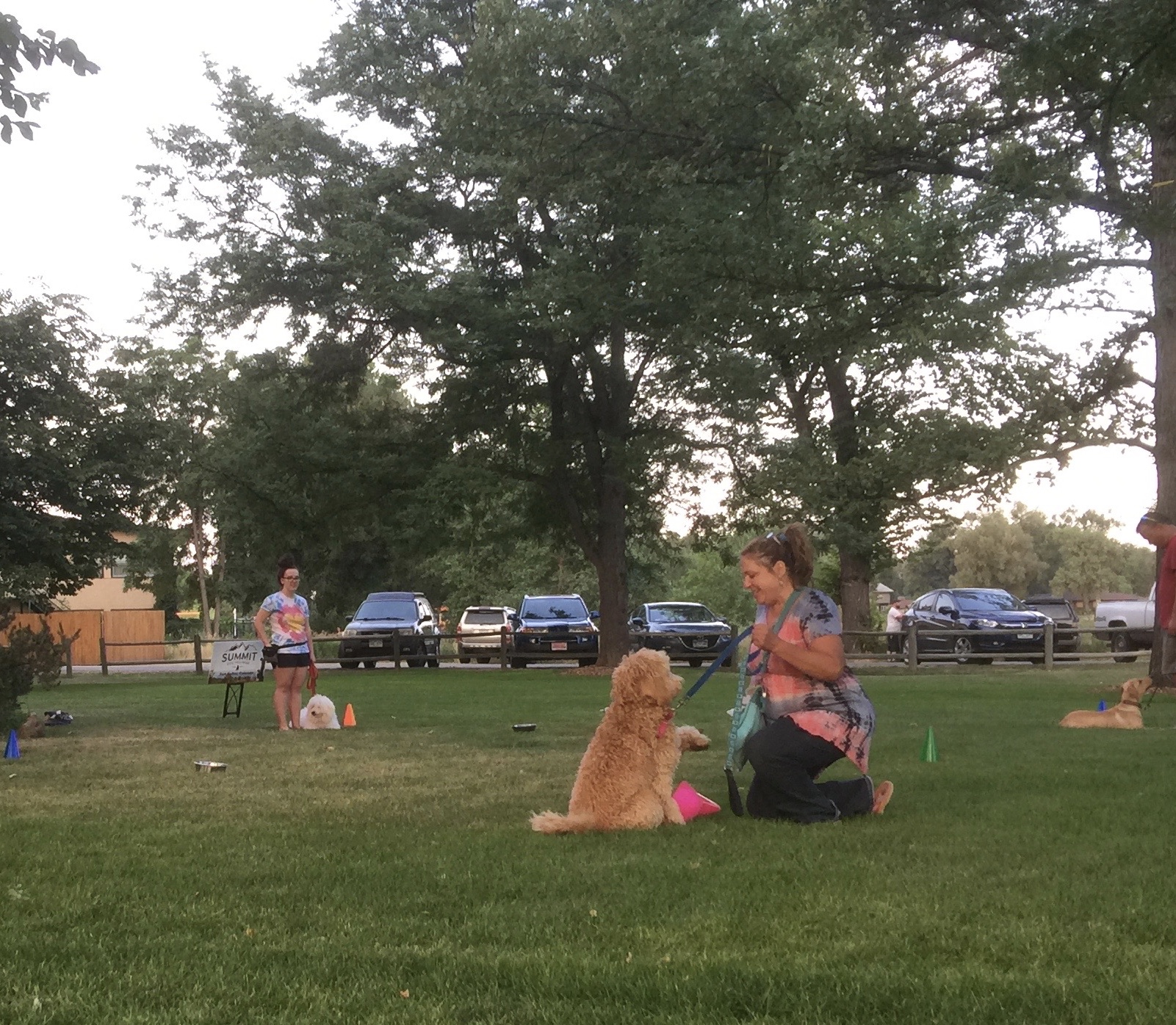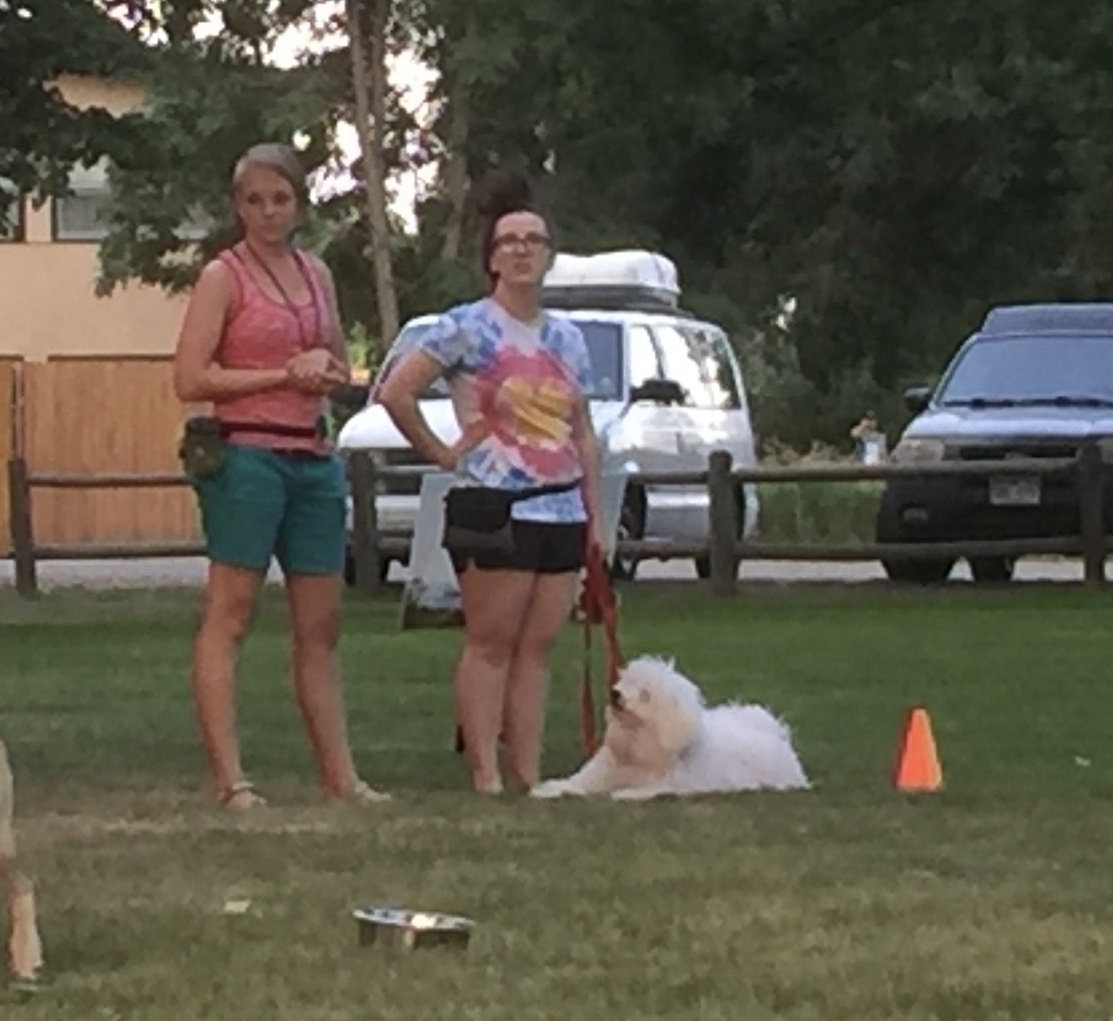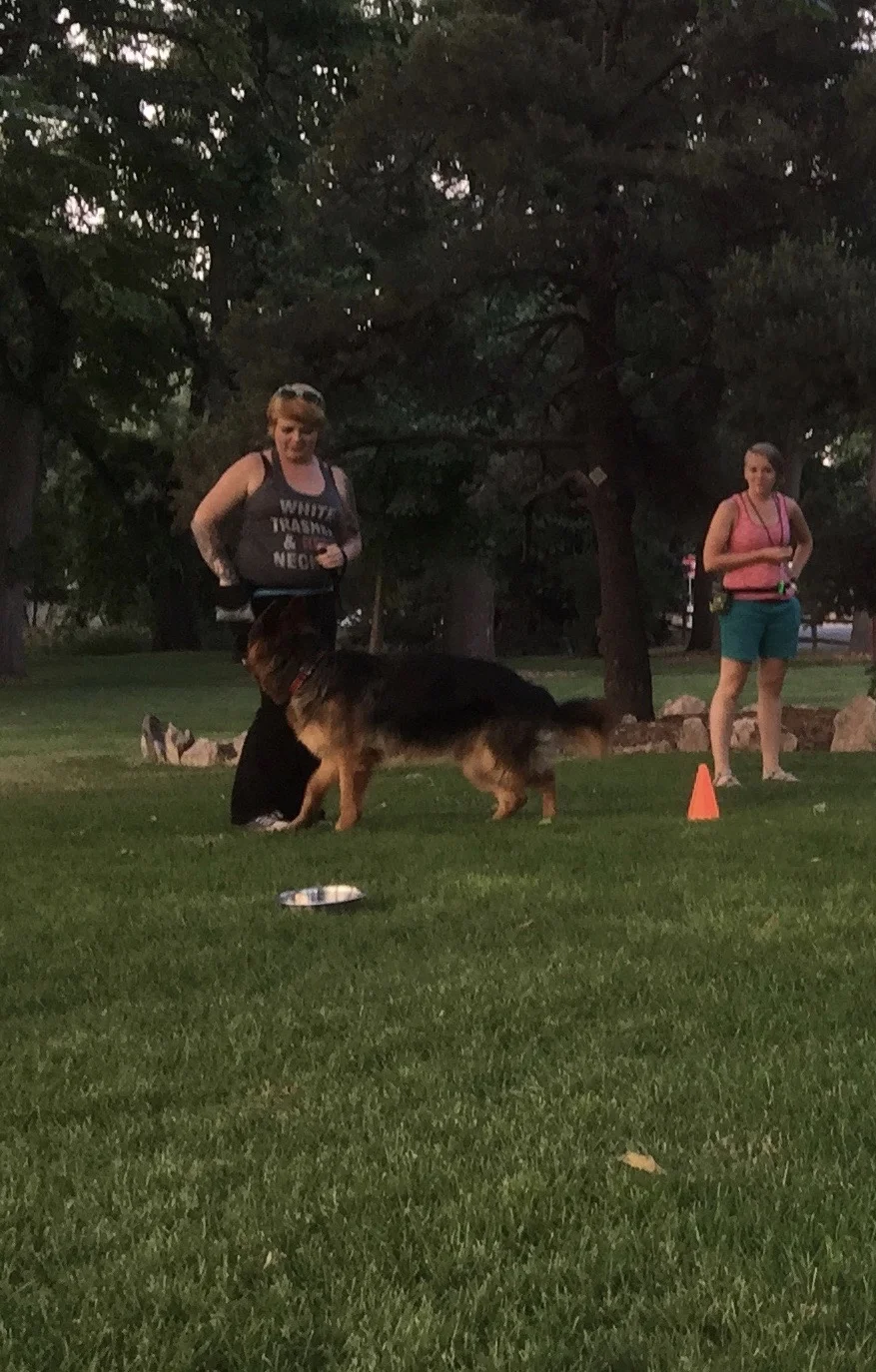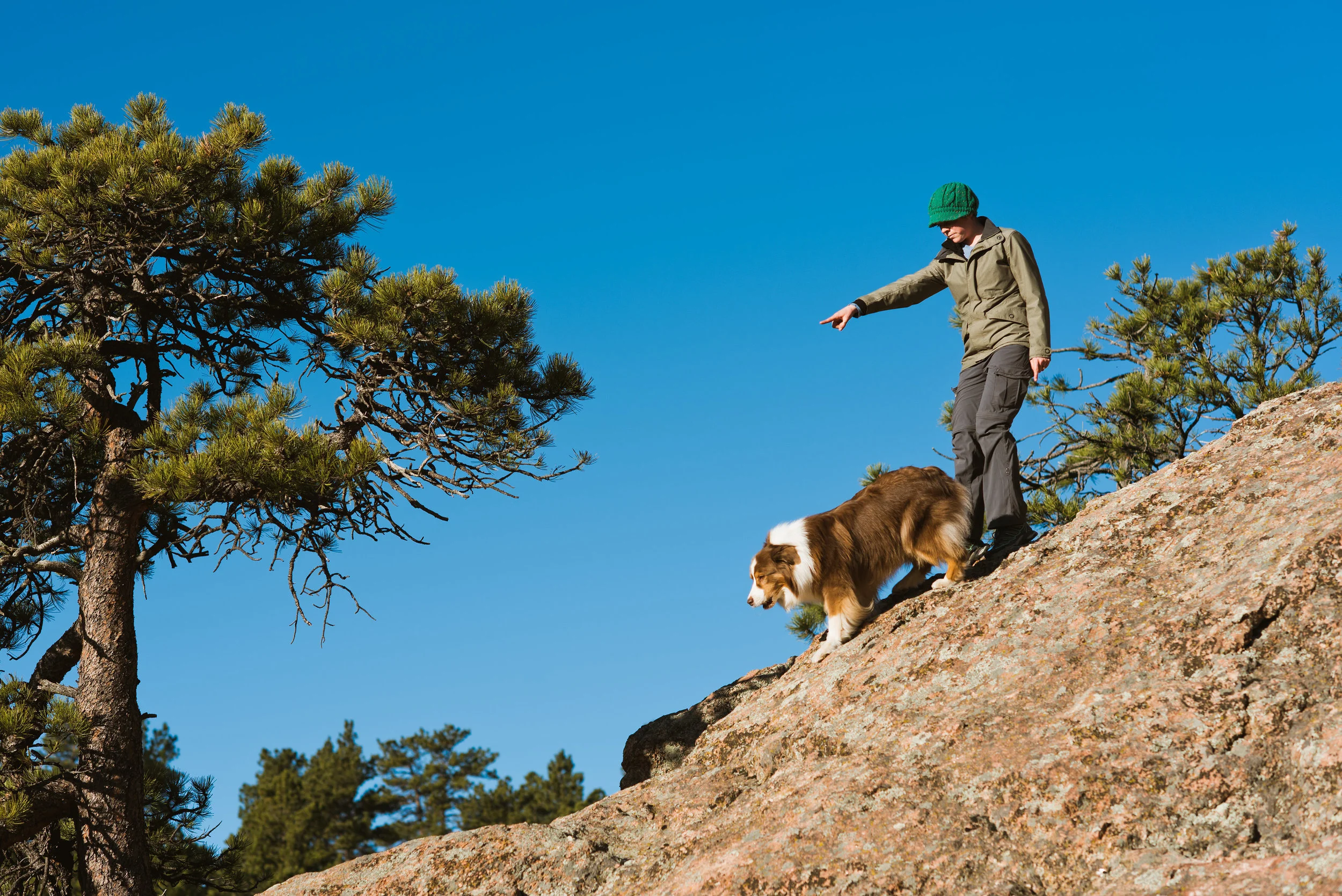Supporting Your Resource Guarding Dog
By Benah Stiewing
What is resource guarding? Resource guarding is a term that refers to behaviors a dog demonstrates in order to protect a resource from potential loss. The resource could be just about anything, including food, toys, bowls, water, their crate or bed, space in the house or yard, or you. Some dogs resource guard from people, some from other dogs, and some from both. The act of protecting what is one’s own is a very normal behavior for any animal to demonstrate, humans included! We erect fences, install cameras, and maybe even purchase a dog to protect what is ours, while dogs use different means. Resource guarding from your dog could look like growling, snarling, hard staring, hovering, or lunging when another person or dog comes too close to their perceived resource. Though resource guarding is a natural behavior, it can be dangerous for us and our dog to practice, so below you will find some helpful management strategies and training tips to set your dog up for success!
Once your dog begins demonstrating guarding behaviors around resources, it’s very easy for the practice to escalate. If your dog is enjoying a bone and they growl or snarl when you lean down to take the bone, and you understandably back away, the guarding behavior is reinforced. The guarding behavior has worked because the perceived threat moved away. We want to avoid this accidental reinforcement through management! Though resource guarding can be scary and emotional, we never want to punish our dog or take the item from them right there - all this does is reinforce that humans are scary and will take their things. We’d rather our dogs learn that resource guarding behaviors on the mild end of the spectrum are all that is necessary for them to maintain their resource - while we teach them through quality behavior modification principles how to feel better about giving up their resources!
Management Strategies:
When your dog is enjoying a resource they typically guard, like their food or a bone, put them in an enclosed space (like their crate) while they enjoy the item. When they are done with the items, release them from their crate and then put them in a different area while you remove the item.
If your dog guards toys, put toys away rather than leaving them out in the living room where a resource guarding event could occur.
If your dog guards spaces, like a certain room or bed, don’t allow them into that room or near that bed until you and your trainer have a solid training plan implemented.
If you absolutely need to get an item from your dog and don’t have them in an enclosed space, do not punish or yell at them to get the item. Instead, grab a handful of high-value cookies and scatter them a few feet away from your dog. When your dog starts eating the cookies, steadily continue dropping treats as you grab the item.
Please Note: These are general management suggestions; depending on the severity of your dog’s behavior, and other factors (such as if there are children in the home), a more customized management plan developed in partnership with your trainer may be needed.
Once you have a solid management strategy in place, it’s time to start training! Our first step is to start trading with your dog. Trading is all about switching the narrative! Instead of a human approaching representing a potential loss, we want a human approaching to represent something really good about to happen.
Give your dog something special but not special enough that they might guard it (like an empty food bowl).
While your dog is investigating the item, simply take a few steps toward them and scatter a handful of treats on the ground right in front of their face.
If they begin eating the cookies, verbally praise and scatter a few more treats.
Repeat this cycle multiple times, until every time you approach your dog looks at you expectantly for the handful of treats!
Once your dog is excitedly anticipating treats when you approach, pick up the food bowl as you do your treat scatter.
If your dog continues eating, put the food bowl down and scatter another handful of treats.
Repeat!
If your dog has made it this far and is still excitedly anticipating treats when you approach, gradually start to raise the value of the item you are taking. First just add a handful of kibble, or even smother some treats on it so it smells good. Be extremely mindful of your dog’s body language as you escalate difficulty, and stop if you notice that your dog is hard staring, hovering over the item, or moving stiffly. Make sure to space out these sessions over days/weeks, so it’s a gradual learning process.
Again, please note: if your dog has a history of strong resource guarding behavior (growling, snapping, biting) towards you, you will need to proceed through this carefully, slowly, and with detailed attention to your dog’s body language. We recommend consulting with a trainer before implementing if you are concerned for your safety. Do not give your dog something that they are likely to guard with the purpose of taking it away in the name of “training.” This is setting both you and your dog up for failure.
In addition to the above protocol, a few times a day simply approach your dog, say “Drop it!” and scatter a handful of treats on the ground in front of their face. You can learn more about this training technique by watching this video by Chirag Patel! We want your approach towards them to equal good things, all the time.
Rehabilitating and coping with a dog who resource guards is no easy task - it’s a complex behavior that requires a lot of effort to improve. If you’re struggling, consider our Resource Guarding Case Study Webinar! If you want additional support for you and your dog, we offer in-person support for Resource Guarding through Private Lessons in Fort Collins, Colorado and Chatham, New York, and virtual coaching right in the comfort of your home. As you work through your dog’s resource guarding, it’s vital to remember that your dog is simply being an animal and desperately trying to protect and preserve what is theirs - the more we can understand this and meet them where they’re at, the stronger your relationship will be.
Summit Dog Training offers group dog training classes & private lessons in Fort Collins, Colorado, as well as online self-study courses & online private lessons for education on how to live the best life with your dog! If you are looking for more training support, please don’t hesitate to contact us! We’d love to help you and your dog get ready for any adventure.





